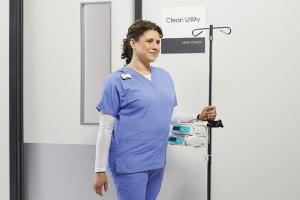HVAC systems rise to the demands of health care facilities
Health care facilities place many demands on heating, ventilating and air conditioning (HVAC) systems. To be beneficial in health care environments, HVAC systems must be flexible and configurable enough to handle outdoor air and control humidity. Because of stringent airflow standards, the equipment must meet high ventilation rates and filtration requirements.
As a result, health facilities managers look for HVAC systems that meet requirements related to temperature, humidity levels and infection control, and provide a comfortable environment for patients, visitors and employees. In addition, hospitals require HVAC systems that are reliable, energy-efficient, quiet and easy to maintain. Also, maintenance activities must be nondisruptive and avoid occupant exposure to contaminated components.
Equipment advances
Among HVAC equipment advances, Greenheck, Schofield, Wis., has developed a variety of fire, smoke and combination fire-and-smoke dampers specifically designed with pressure drop (or resistance to airflow) in mind. The ultralow pressure drop dampers result in lower HVAC system horsepower requirements, which reduce electrical usage, says Tony Rossi, vice president of marketing.
You may also like |
| HVAC design requirements for medical spaces |
| HVAC equipment for off-site care |
| Selecting a health care HVAC system |
| |
Greenheck also has introduced its Sure-Aire system for fans. It accurately measures airflow through a fan without decreasing the fan’s efficiency due to system effects caused by invasive flow-mounted probes. These airflow measurements then can be tied to the facility’s building automation system (BAS) to maintain optimum performance.
Another development is electronically commutated motors with built-in, variable-speed control. The ability to provide variable-speed control based upon system needs helps to increase the efficiency of the motor and saves on energy costs.
HVAC systems ranging from 3 to 240 tons are available with variable-capacity compressors; direct-drive, variable-speed supply fans; and single-zone, variable-air volume (VAV) controls that maximize energy savings, says Eric Taylor, marketing manager, AAON, Tulsa, Okla.
“Variable-capacity compressors save energy during part-load conditions by matching the cooling capacity to the load,” Taylor explains. “Direct-drive, variable-speed fans save energy because they do not have belt energy losses and can vary airflow to match part-load conditions. Single-zone VAV controls maximize energy savings by making these components work seamlessly together; the supply fan modulates to control space temperature, and the compressor modulates to control supply air temperature.”
Variable-capacity compressors in AAON equipment save energy during part-load conditions by matching the cooling capacity to the building load. The compressors also allow HVAC equipment to provide precise temperature control, according to Taylor.
“Outdoor airflow monitoring is available on AAON HVAC equipment to maintain ventilation rates to the space. This helps to maintain and improve indoor air quality,” he adds. Also, ultraviolet lights are available to prevent microbial growth.
Daikin Applied, Plymouth, Minn., has redesigned the Pathfinder, an air-cooled chiller that now offers 100 percent configurability and flexibility, allowing the unit to restore cooling quickly in the event of a short-term power loss event, says Rick Hermans, PE, director of training and advanced applications. The company also has unveiled Intelligent Equipment, an Internet-enabled HVAC system that gives facilities managers 24/7 access to the building information and allows them to manage operations from their smartphone, tablet or desktop.
In addition, Daikin Applied has incorporated inverter compressor control across its Maverick, Rebel and Roofpak packaged rooftop systems. Featuring varying load coverage, the technology is well-suited to the wide range of capacity control required in health care. “Inverter compressors only supply the amount of cooling required to meet the load, thereby increasing energy-efficiency. HVAC equipment can operate at part load 98 percent of the year, resulting in lower energy consumption,” Hermans notes.
Daikin Applied equipment also includes energy-recovery systems. These integral features use energy from exhausted air to precondition new ventilation air.
Variable-refrigerant flow
Variable-refrigerant flow (VRF) systems are another technology being used in health facilities. By design, VRF allows for individual temperature control by zone (or room) for maximum comfort 24/7.
LG Electronics, Englewood Cliffs, N.J., offers LG Multi V IV VRF systems that provide near-silent, individualized comfort with indoor units offering sound levels as low as 28 dBA and an Air-Conditioning, Heating and Refrigeration Institute integrated energy-efficiency ratio (IEER) of 38.5. The systems provide zoned temperature control, allowing independent set points for each zone and, in turn, providing individual comfort for each patient, says Greg Day, applications engineer.
LG Electronics also offers heat recovery VRF systems for simultaneous heating and cooling from the same facility. Heat recovery offers an additional level of energy-efficiency by removing heat from zones that need cooling and rerouting it to zones that need heating, thus eliminating the need for a separate heating system. Energy consumption can be reduced further when handling extreme outside air requirements with the LG AHU module, which allows for built-up outside air systems that meet the specific needs of a hospital.
The latest VRF innovation from Mitsubishi Electric US Inc.’s cooling and heating division in Suwanee, Ga., is the City Multi L-Generation Air-Source system. It features single modules up to 14 tons, with the ability to combine modules for systems up to 30 tons. “The L-Generation has achieved improved efficiency ratings due to HexiCoil technology, a zinc-aluminum flat tube heat exchanger that maximizes heat transfer capability through its unique fin shape,” explains Kevin Miskewicz, senior manager, commercial marketing. “Other enhancements include a 30 percent smaller footprint, reduction in refrigerant charge, improved high-ambient cooling range and more vertical separation between indoor units.”
Digital technologies are part of these new HVAC systems. LG Electronics central controllers, such as the AC Smart controller, are Web-enabled and can be accessed remotely through a Web browser, offering remote control and monitoring capabilities. In addition, the Mobile LGMV app-based service tool facilitates wireless access to the system for commissioning and troubleshooting.
Diamond Controls Solutions from Mitsubishi Electric allows facilities managers to modify zone temperature and other mechanical system settings — all around the facility’s optimal schedule. Also, users can schedule setbacks around the weather forecast, as Diamond Controls can monitor the ambient temperature conditions and adjust mechanical systems.
“The displayed trends, reports and analyses reveal in real time how the building’s systems are reacting to user behavior, building conditions and ambient conditions. Displayable trends include building and space occupancy, CO2 levels, energy usage and humidity levels. All of this information is displayed via a secure Web page,” Miskewicz says.
Serving all areas
As spaces within a hospital range from offices to areas with critical requirements, Trane Tracer, available from Trane, Davidson, N.C., allows facilities managers to monitor and optimize environmental requirements for individual spaces.
With Trane Tracer, hospitals can integrate HVAC and other systems to develop a single, integrated platform. It also captures and measures energy data, allowing users to gain additional insight into building performance and usage. “For example, many acute care hospitals have large chiller plants, and numerous critical areas in the hospital are fed by the chiller plant. Collecting data that help to maintain the efficiency and uptime of the chiller plant is critical,” says Jim Beam, controls sales leader, North America, Trane.
Efficient HVAC systems help to ensure patient safety and comfort as well. “Humidity and air quality are important considerations in hospitals, especially surgical suites,” Beam says. “Trane uses desiccant dehumidification. When used in HVAC systems, it minimizes the need to reheat air to achieve proper humidity control. This provides energy savings while meeting strict surgical ventilation, humidity and temperature requirements.”
Johnson Controls, Milwaukee, offers Health Environment Optimization, which integrates the building automation system with surgery scheduling to safely lower air exchange rates when operating rooms are not in use while maintaining and validating differential pressures. When in use, air exchange rates ramp up and in-room displays confirm that environmental conditions are optimal for care, says Renee Jacobs, CHFM, CHC, SASHE, enterprise strategic account manager.
The system helps clinicians to see and control operating room conditions more easily, and to simplify the documentation of surgical events, including:
• Tracking building and room conditions;
• Optimizing the safety, comfort and efficiency of surgical suites and other critical environments;
• Meeting standards for air exchange rates;
• Earning credits toward LEED certification.
Low acoustics and HVAC system reliability are crucial to ensuring patient safety, comfort and satisfaction. To achieve that, Greenheck offers air flow measurement systems integral to its fans and dampers, which ensure proper airflow. To achieve low acoustics, reliability and energy-efficiency, the company recently introduced EQB mixed-flow inline fans, which exhaust, supply or recirculate general clean air in a building. Utilizing octagonal housing, EQB fans maximize air performance while reducing energy usage and sound levels.
Finally, as off-site facilities become a larger part of the health care landscape, HVAC systems are being designed to accommodate their needs. AAON offers complete packaged systems, ranging from 3 to 240 tons, for these applications. “Features that were once available only on large custom equipment are now available on small and large AAON packaged rooftop units, split systems and self-contained units,” Taylor says.
Metasys 7.0 User Interface from Johnson Controls addresses the needs of off-site facilities. It provides monitoring and remote management that is accessible from any device anywhere. “From a phone, tablet or desktop, facilities managers can take steps to increase efficiency and reduce energy consumption while providing HVAC management of an entire building or campus on a mobile platform,” Jacobs says.
Continued development
There will be continued development in regard to controls and HVAC system integration, predicts Rossi. “Advances in controls, near-field and wireless technologies will allow the components of an HVAC system to communicate with each other,” he adds.
Hermans expects the need for remote and predictive diagnostics to grow as health care organizations build out into communities to serve patients near where they live.
Neal Lorenzi is a freelance writer based in Mundelein, Ill.
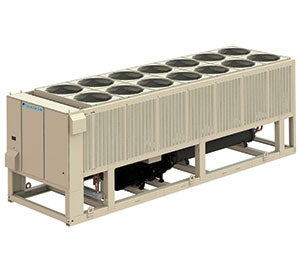 | On trackPathfinder is a fully configurable, air-cooled chiller that can restore cooling quickly in the event of a short-term power loss. |
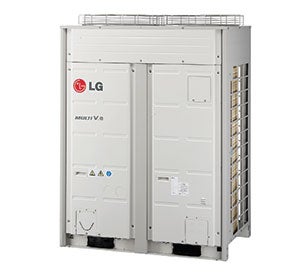 | Safe and soundMulti V IV VRF systems provide low sound levels and zoned temperature control. |
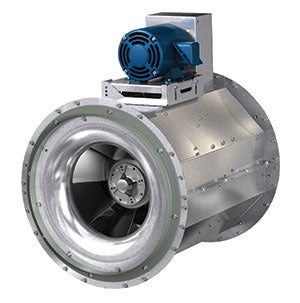 | Three in oneModel EQB is designed to efficiently exhaust, supply or recirculate clean air in a building. |
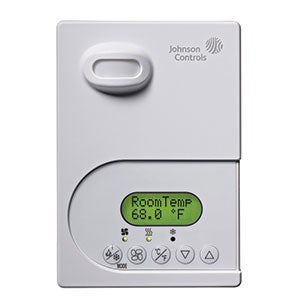 | Reading the roomThis thermostat features an occupancy sensor that safely lowers air exchange rates when a room is not in use while maintaining and validating differential pressures. |
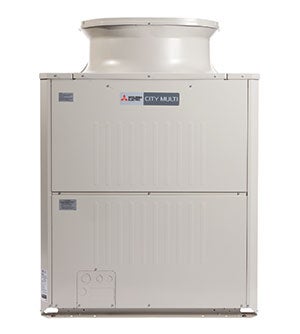 | Special programmingThe City Multi L-Generation Air-Source VRF system provides individual temperature control by zone (or room) for maximum comfort 24/7. |
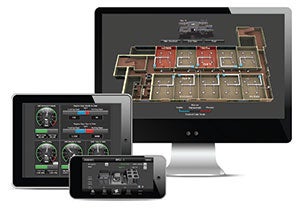 | Common structureWith the Tracer building automation system, hospitals can integrate HVAC and other systems to develop a single, integrated platform, resulting in easier and more efficient building management. |
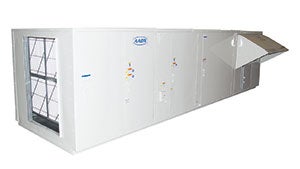 | Packaged solutionThe RN Series packaged rooftop units are available with factory-installed, high-efficiency final filtration. |




